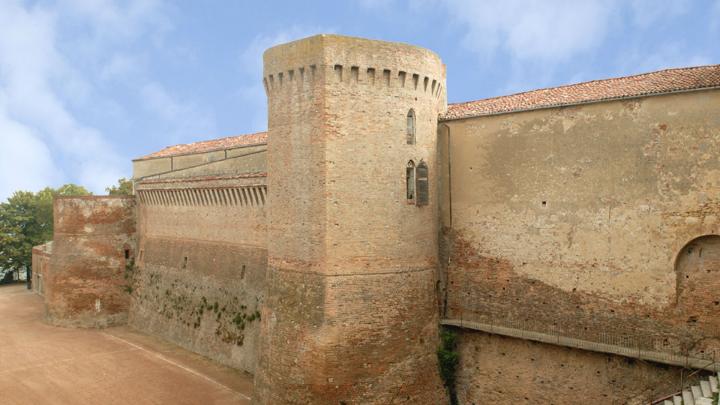Since the early Middle Ages, Moncalvo had its own defensive cornerstone in the castle, a structure subjected to a first modernization work in the sixties and seventies of the fifteenth century, at the time of the Marquis Guglielmo VIII Paleologo's government, when the falsebraghe were rebuilt, rewinding the curtain towers and adding the south-west tower, showing a new "drop" profile.
As far as we can understand during the early sixteenth century, the interventions were concentrated in the reorganization of the front towards the inhabited area with the introduction of two bulwarks and the construction of a raveline to protect the emergency door towards Casale. It is probably the work ordered by Bonifacio III at the fall of the fifteenth century and completed by Guglielmo IX in the early years of the following century: from the drawings, it is clear that the already demolished bulwarks were actually towers with an acute angle profile, while the northern raveline is represented by Francesco Orologi in 1555, as a pentagonal strut with two turrets on the outer edges. The hypothesis finds indirect confirmation in the widespread presence of pentagonal towers along the village's curtain; an indication of a wide-ranging operation, difficult to fulfill in uncertain conditions in which the marquisate was in its thirties and forties of the sixteenth century.
In 1559, Gonzaga was commissioned to continue the Moncalvo work, the castle was the center of surveys in the final decades of the century, led by Giorgio Palearo Fratino, Giovanni Francesco Baronino and Lorenzo Bertazzolo, who, however, were unable to change a significant weakness in the condition. When in 1628 Moncalvo was again laid siege, the Savoy spoilers did not encounter any difficulty in undermining and quickly having to defend their defenses.

